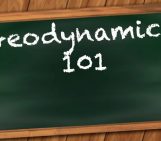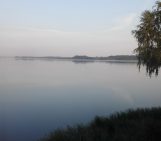
Every week, The Sassy Scientist answers a question on geodynamics, related topics, academic life, the universe or anything in between with a healthy dose of sarcasm. Do you have a question for The Sassy Scientist? Submit your question here or leave a comment below.
In a comment on a post about the key papers in geodynamics, the Curmudgeonly Commenter asked:
Could you please point out some exceptionally important papers in geodynamics and tell us something interesting about the history of the field?
Dear CC,
After discussing the earthquake cycle last week, I think we can go into friction. Are you still following me? Is this series of blog posts in depth enough? There’s more to come, don’t worry.
Rate-and-state turmoil
During the 60’s and 70’s an additional new theory was fostered in the framework of rock mechanical experiments investigating friction, which still rocks the scientific community to this very day: rate- and state-dependent friction. I cannot get into too much detail about rate-and-state friction here for brevity and clarity — and I won’t — but I’ll leave some references at your disposal for further in-depth reconnaissance. Building on earlier work, Dieterich (1978, 1979) and Ruina (1983) describe that the shear stress on a fault plane is related to the normal stress on said fault plane — as in Byerlee — but additionally the sliding velocity on the fault and a critical slip distance (i.e., a measure of the fault interface smoothness) also come into the equation. The fault interface itself is oftentimes distributed as a fault gouge — i.e., a very fine-grained, usually unconsolidated material in a fault zone between the strong blocks. Faults without such gouge are oftentimes considered immature, and may behave fundamentally different (Marone and Scholz 1988). Putting the complexity of frictional fault slip in layman’s terms: the rate-and-state formalism states that the friction on a fault interface evolves through time, between static ‘locking’ and dynamic ‘sliding’ coefficients. This includes the possibility of healing or weakening of the fault interface (Marone 1998, Scholz 1998, Sleep 2005). Rate-and-state dependent friction provides an explanation for an abundance of observations, e.g., predicting stable, conditionally stable and unstable depth ranges of seismicity, the down-dip slip distribution and loading of a fault plane during the interseismic period, and aftershocks (e.g., Marone 1998, Scholz 1998). One — relatively recent — and exciting observation is that the rate-and-state friction formalism does not only hold for earthquakes generated at interfaces between rocks, but also along the bottom of ice masses (Winberry et al. 2013; Lipovsky and Dynham 2016). That’s just a chilling coincidence.
Just one tiny, eensy-teensy, itty-bitty, wee, slightly negative comment on rate-and-state friction; it’s a kinematic description of the observations, not a mechanical explanation of what’s actually happening at depth along a ‘fault interface’. If you can even call it that.
I think that’s more than enough for one week. Or rather, the Editor-in-Chief thinks that.
Yours truly,
The Sassy Scientist
PS: This post was written in some state at some rate.
References: Dieterich, J. H. (1978), Time-dependent friction and the mechanics of stick-slip. Pure and Applied Geophysics, 116, 790–805 Dieterich, J. H. (1979), Modeling of rock friction: 1. Experimental results and constitutive equations. Journal of Geophysical Research, 84, 2161–2168 Lipovsky, B. P. and Dunham, E. M. (2016), Tremor during ice-stream stick slip. The Cryosphere, 10, 385–399, doi:10.5194/tc-10-385-2016 Marone, C. J. (1998), Laboratory-derived friction laws and their application to seismic faulting. Annual Reviews of Earth and Planetary Science, 26, 643–696 Marone, C. J. and Scholz, C. H. (1988), The depth of seismic faulting and the upper transition from stable to unstable slip regimes. Geophysical Research Letters, 15, 621–624 Ruina, A. (1983), Slip instability and state variable friction laws. Journal of Geophysical Research, 88, 10359–10370 Scholz, C. H. (1998), Earthquakes and friction laws. Nature, 391, 37–42 Sleep, N. (2005), Physical basis of evolution laws for rate and state friction. Geochemistry, Geophysics, Geosystems, 6, 11, doi:10.1029/2005GC000991 Winberry J. P., S. Anandakrishnan, D. A. Wiens, and Alley, R. B. (2013), Nucleation and seismic tremor associated with the glacial earthquakes of Whillans Ice Stream, Antarctica. Geophysical Research Letters, 40, 312–315, doi:10.1002/grl.50130





The Curmudgeonly Commenter
At this rate, you’ll leave me in quite a state! I hope that any buildup of stress between us is periodically released.
Sistem Informasi
What are the potential implications of ignoring the correlation between seismic hazard and seismic risk?